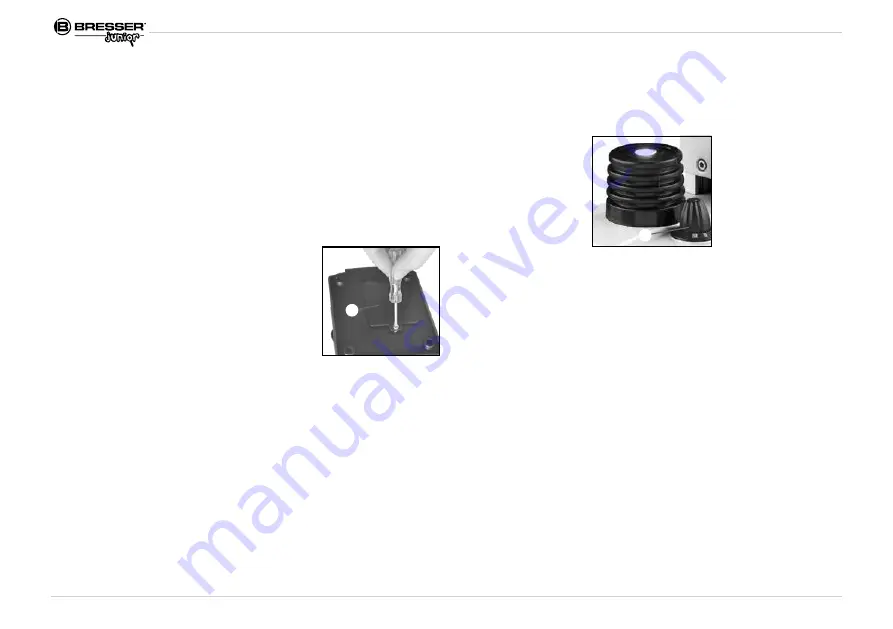
14
Here are the parts of your microscope
1 10x WF Eyepiece
2 20x WF Eyepiece
3 Barlow Lens
4 Eyepiece supports
5 Microscope Head
6 Objective Nosepiece
7 Objective
8 Clips
9 Microscope Stage
10 LED Illumination (transmitted light)
11 Microscope Base
12 Selection Knob for Illumination
13 Battery compartment
14 Focus knob
15 Color Filter wheel
16 LED Illumination (reflected light)
17 5 Slides, 5 Cover Sips and 5 Prepared Spec-
imens plastic box
18 Specimens:
a) Yeast
b) Sea Salt
c) Shrimp Eggs
d) Empty Bottle
e) Empty Bottle
19 Specimen slicer
20 Hatchery
21 Test tube
22 Tweezers
23 Dissecting needle
24 Dissecting knife
25 Protective cover
26 Container
27 Smartphone holder
How do I use my microscope?
Before you assemble your microscope, make
sure that the table, desk or whatever surface
that you want to place it on is stable, and does
not wobble.
How do I operate the electric LED
illumination?
In the base of the mi-
croscope there is a
battery compartment
(13). Loosen the
screw at the battery
compartment cover
with a small Philips
screwdriver and re-
move the cover.
Place the batteries in the compartment so that
the flat minus poles (-) press against the spring
terminal and the plus poles (+) are touching the
flat contact sheets.
Close the battery compartment with the cover
and turn the microscope around again.
The first lamp shines onto the specimen from
below and the second from above. (The thing
that you want to observe with the microscope is
called the object or specimen, by the way.) You
can use each lamp on its own, or both of them
together. There is a selection knob for this (12).
It has three numbers: I, II and III.
If you select the …
I,
the light only
comes from be-
low (transmitted
light).
II,
the light only
comes from
above (reflected
light).
III, both lamps shine light on the specimen.
For transparent objects (transmitted-light ob-
jects), number I is best. In order to observe firm,
non-transparent objects (direct-light objects),
select number II. For semi-transparent objects,
it is best to select number III.
It is not recommended to use number III for
transmitted-light objects on slides, since the
light may cause reflections on the surface of
the slide, which will disturb your observation.
When do I use the color filters?
The color filter wheel (15) is located below the
microscope stage (9). They help you when you
are observing very bright or clear specimens.
Here, you can choose from various colors. This
helps you better recognize the components of
colorless or transparent objects (e.g. grains of















































